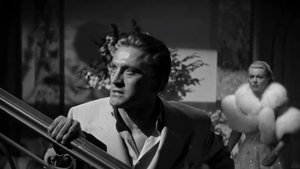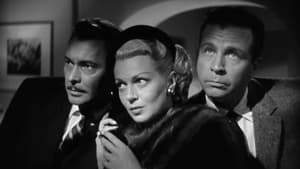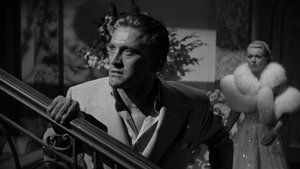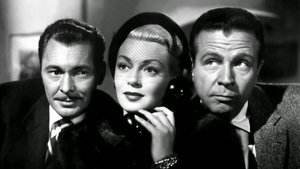Contact: info@alwanfilm.com
Video Sources 0 Views
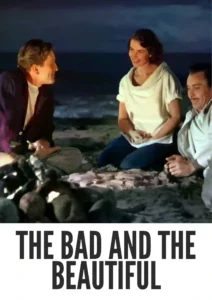
Synopsis
The Bad and the Beautiful 1952 Colorized Review: A Cinematic Masterpiece of Hollywood’s Dark Side

Introduction
Hollywood in the 1950s was a breeding ground for films that explored the intricacies of show business and the darker aspects of human ambition. Among the most iconic films from this period is The Bad and the Beautiful (1952), a striking and complex drama directed by Vincente Minnelli. This film delves into the heart of Hollywood, portraying the glamor, the ruthlessness, and the often-destructive relationships that define the industry. With a stellar cast led by Kirk Douglas, The Bad and the Beautiful paints a vivid picture of the sacrifices made for success and the personal toll of ambition. In this review, we will explore the narrative complexity, stellar performances, and thematic depth of this 1952 classic, while examining its influence on both cinema and Hollywood culture.
Check The Full Colorized Movies List
Check Our Colorized Movies Trailer Channel
Understanding The Bad and the Beautiful 1952 Colorized: Director, Cast, and Genre
Director’s Vision
Vincente Minnelli, known for his work in musicals like An American in Paris (1951), shifted gears with The Bad and the Beautiful, creating a dramatic exploration of power, betrayal, and the cost of fame. Minnelli’s direction masterfully balances a narrative that oscillates between personal relationships and the professional ambitions of the characters, all set within the cutthroat world of the film industry. His ability to capture both the seductive allure of Hollywood and its destructive undercurrents is what makes the film so compelling. Every shot is carefully composed to reflect the duality of beauty and darkness in the characters’ lives, while the film’s pacing maintains a tension that holds the audience captive throughout.
The Iconic Performances of the Cast
At the heart of The Bad and the Beautiful is Kirk Douglas, whose portrayal of the ambitious, manipulative producer Jonathan Shields is both charismatic and chilling. Douglas’s performance is a tour de force, embodying the charm and ruthlessness that defines the character. Shields is a man who will stop at nothing to achieve success, and Douglas brings a magnetic intensity to the role that makes him both repellent and irresistible.
Alongside Douglas, the film features brilliant performances from Lana Turner, Walter Pidgeon, Dick Powell, and Gloria Grahame. Turner plays Georgia Lorrison, a fragile yet talented actress whose rise to stardom is engineered by Shields. Turner’s performance is raw and vulnerable, capturing the complexities of a woman both empowered and destroyed by Hollywood. Grahame, as Rosemary Bartlow, delivers a standout performance, earning her an Academy Award for Best Supporting Actress. Her portrayal of a vivacious yet doomed character adds depth to the film’s exploration of personal tragedy within the context of the Hollywood machine.
Exploring the Genre: A Film About Films
The Bad and the Beautiful is a film that falls within the genre of drama but is also categorized as a “movie about movies.” This meta-genre explores the inner workings of Hollywood, offering a critical lens on the industry’s impact on those who inhabit it. Minnelli’s film is not just about the making of movies but about the people behind them—their ambitions, their relationships, and the moral compromises they make. It’s a character-driven drama, but it is also a biting commentary on the price of fame and success in Hollywood. The film deftly explores the industry’s capacity to build people up and then tear them down, often with ruthless efficiency.
Exploring the World of The Bad and the Beautiful 1952 Colorized: Plot and Characters
Detailed Synopsis
The Bad and the Beautiful is structured around a series of flashbacks, each told from the perspective of a character who has been deeply affected by Jonathan Shields. The film begins with a well-known Hollywood producer attempting to recruit three former colleagues—an actress, a director, and a writer—to work on a new project with Shields, despite their shared animosity toward him.
The narrative then shifts into each character’s story. We first hear from Fred Amiel (played by Barry Sullivan), a talented but inexperienced director whom Shields mentored and eventually betrayed by taking away his first major directorial opportunity. Next is the story of Georgia Lorrison (Lana Turner), a troubled actress whose career Shields resurrects, only for her to be emotionally shattered by his manipulative tendencies. Lastly, the film delves into the life of James Lee Bartlow (Dick Powell), a novelist who Shields convinces to work in Hollywood, only for tragedy to strike when his wife (Gloria Grahame) becomes involved with another man.
Each of these stories paints a portrait of a man who is both brilliant and destructive, whose ability to create success comes at a personal cost to those around him. The film’s plot is layered with emotional and moral complexity, as each character must reckon with the ways Shields has shaped—and in some cases, ruined—their lives.
Complex Protagonist and Supporting Characters
Jonathan Shields is one of the most complex protagonists in 1950s cinema. He is a character who embodies the duality of genius and ruthlessness, capable of great creativity and equally great cruelty. Shields is emblematic of the film industry itself—glamorous and powerful on the surface, yet capable of inflicting deep emotional wounds. Kirk Douglas’s portrayal brings out the full range of this character, making Shields both the hero and the villain of the story.
The supporting characters, particularly Georgia Lorrison and James Lee Bartlow, are equally rich in their complexity. Georgia’s journey from broken actress to Hollywood star is a central emotional thread in the film, and Lana Turner captures her fragility and strength with nuance. Meanwhile, Bartlow’s tragic story, particularly involving his wife Rosemary, adds a layer of personal sacrifice to the film’s broader themes of ambition and success.
The Dark Side of Hollywood: Themes in The Bad and the Beautiful 1952 Colorized
Ambition, Betrayal, and Moral Compromise
At its core, The Bad and the Beautiful is about ambition—both its driving force and its destructive potential. Each character in the film is, in some way, motivated by a desire for success, whether it’s Georgia’s quest for stardom, Fred’s dream of becoming a director, or Bartlow’s pursuit of literary acclaim. But the film also shows how ambition can lead to betrayal and moral compromise. Jonathan Shields is willing to manipulate, deceive, and betray the people closest to him in order to achieve his goals, leaving a trail of personal destruction in his wake.
The Cost of Success
One of the central themes in The Bad and the Beautiful is the cost of success. The film explores how success in Hollywood often comes at the expense of personal relationships and emotional well-being. Shields’s professional triumphs are built on the sacrifices and pain of others, and while he achieves greatness in the industry, it’s clear that this comes with a heavy personal cost. The film doesn’t shy away from showing the human toll of the pursuit of fame and power, making it a sobering look at the darker side of Hollywood.
The Hollywood Machine
The film also serves as a commentary on the Hollywood “machine,” the system that elevates people to stardom and then discards them when they are no longer useful. This theme is embodied in the character of Georgia Lorrison, whose life is both saved and destroyed by the industry. While the film celebrates the magic of movies, it also critiques the way Hollywood exploits talent, particularly women, for commercial gain.
The Legacy of The Bad and the Beautiful 1952 Colorized: Influence on Cinema and Hollywood Culture
A Cinematic Classic
The Bad and the Beautiful has had a lasting influence on films about Hollywood, serving as a template for future movies that explore the behind-the-scenes world of filmmaking. Its portrayal of the complexities and contradictions of the industry has been echoed in later films like Sunset Boulevard (1950) and The Player (1992). The film’s dark, introspective take on the film industry was groundbreaking for its time, offering a more critical view of Hollywood than many contemporary films.
Awards and Recognition
The film was a critical and commercial success upon its release, winning five Academy Awards, including Best Supporting Actress for Gloria Grahame, Best Art Direction, and Best Cinematography. Its multiple Oscar wins and nominations are a testament to the film’s technical and artistic achievements, particularly its innovative structure and the complexity of its performances.
Reception and Controversy Surrounding The Bad and the Beautiful 1952 Colorized
Initial Reception
The Bad and the Beautiful was met with widespread acclaim upon its release, particularly for its screenplay, direction, and performances. Critics praised the film for its unflinching portrayal of Hollywood’s darker side and its willingness to explore the moral compromises often made in pursuit of success. Kirk Douglas’s performance was hailed as one of his best, with many noting his ability to bring depth to a character who could easily have been a one-dimensional villain.
Later Reevaluation
Over the years, the film has been reevaluated by critics and audiences, many of whom see it as one of the definitive films about Hollywood. Its exploration of ambition, betrayal, and personal sacrifice has resonated with subsequent generations of filmmakers and moviegoers. While some modern viewers might find its portrayal of women problematic by today’s standards, the film remains a powerful commentary on the personal toll of ambition.
Where to Watch The Bad and the Beautiful 1952 Colorized Online
For those looking to watch The Bad and the Beautiful (1952), it is available on various streaming platforms, including Amazon Prime Video and Criterion Channel. The film can also be found on DVD and Blu-ray, often packaged with additional content such as behind-the-scenes footage and interviews with cast members.
FAQs About The Bad and the Beautiful 1952 Colorized
Q: What is the significance of the title The Bad and the Beautiful?
A: The title reflects the dual nature of Hollywood and its inhabitants—the glamorous surface (“the beautiful”) and the darker, more destructive undercurrents (“the bad”). It captures the film’s exploration of the contradictions within the industry and its characters.
Q: Who directed The Bad and the Beautiful?
A: The film was directed by Vincente Minnelli, a legendary Hollywood director known for his work in both dramas and musicals.
Q: How did The Bad and the Beautiful influence future films?
A: The film’s portrayal of Hollywood’s darker side influenced many subsequent films about the industry, including Sunset Boulevard and The Player. Its narrative structure, built around multiple flashbacks, has also been echoed in other films.
Q: Did The Bad and the Beautiful win any awards?
A: Yes, the film won five Academy Awards, including Best Supporting Actress for Gloria Grahame and Best Cinematography.
Conclusion
The Bad and the Beautiful (1952) remains a landmark film in Hollywood history, offering a searing look at the personal and professional costs of ambition. Vincente Minnelli’s masterful direction, combined with Kirk Douglas’s riveting performance, creates a film that is both a critique of the industry and a celebration of its power to captivate and destroy. Whether viewed as a cautionary tale or a cinematic masterpiece, The Bad and the Beautiful continues to resonate with audiences, reminding us of the high stakes in the world of fame and fortune.


